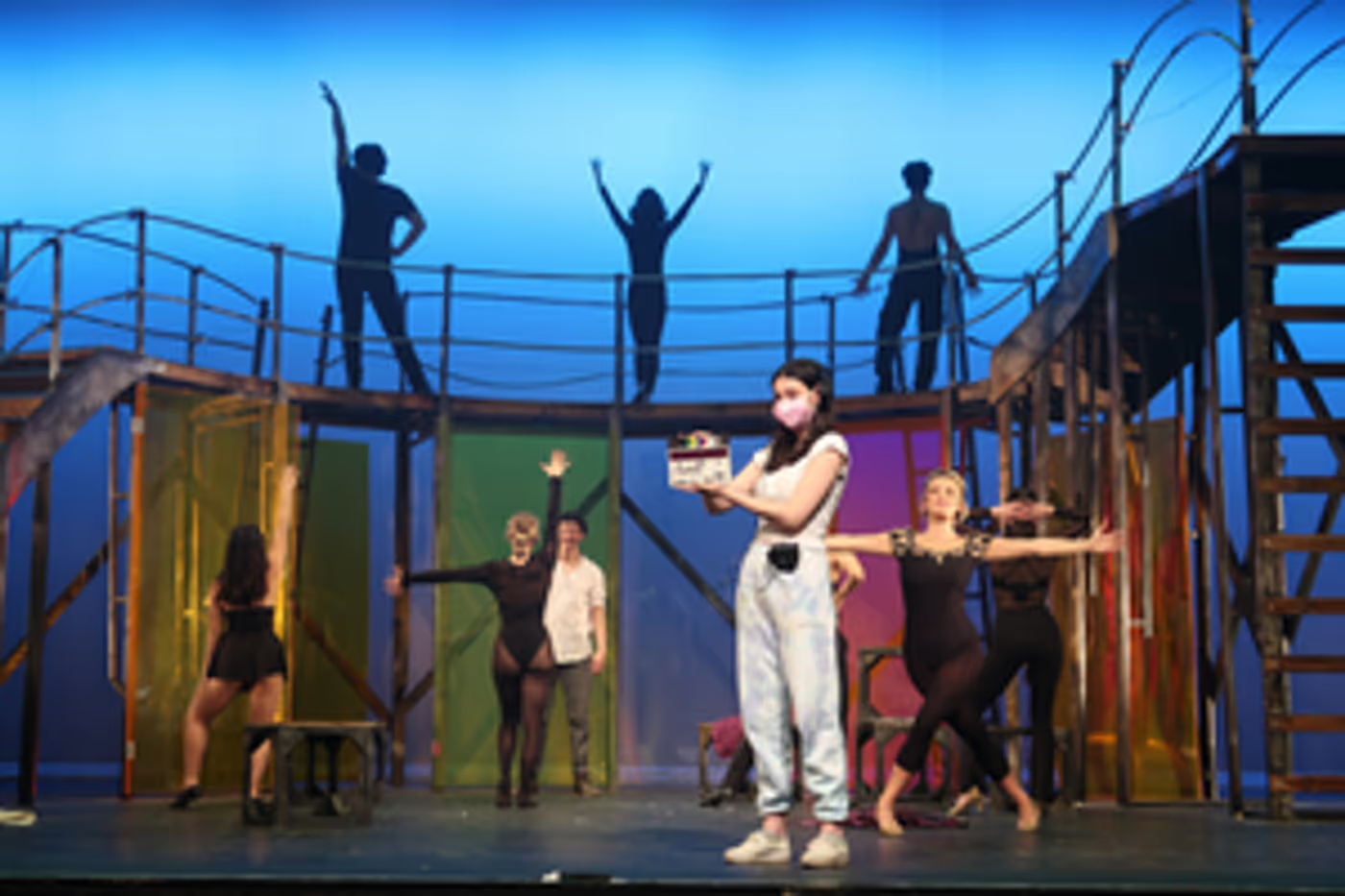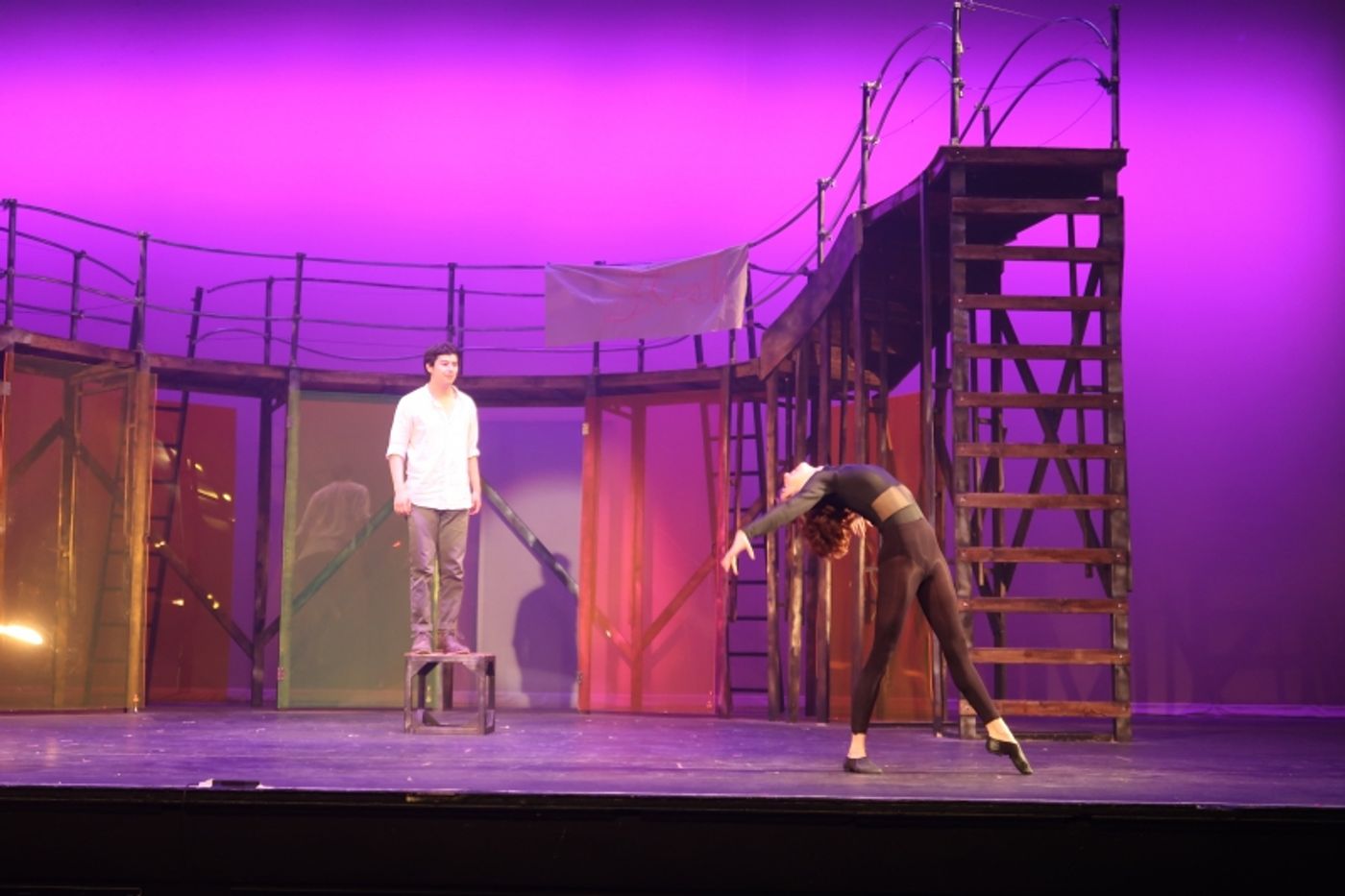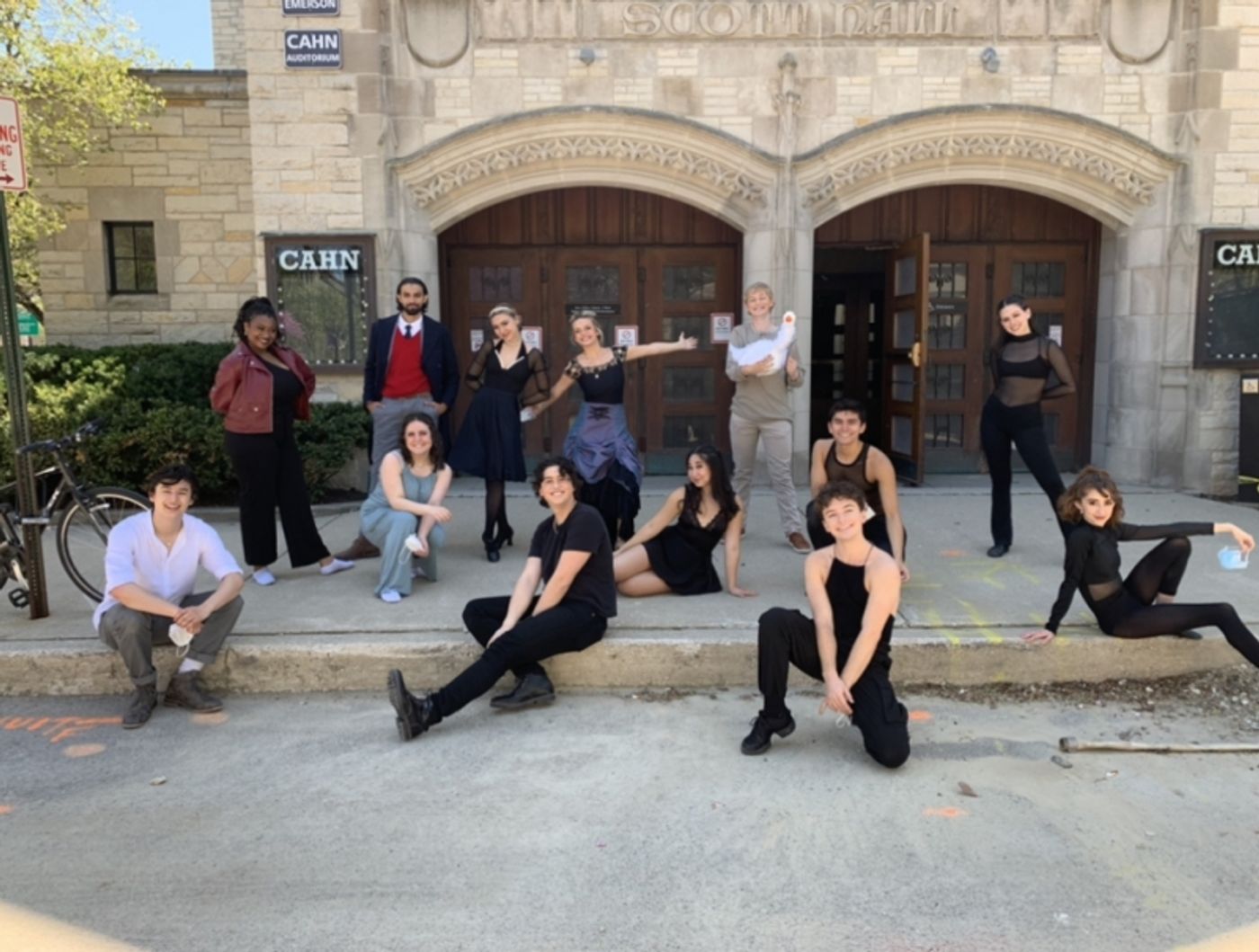Student Blog: Northwestern's Dolphin Show Still Has Magic to Do
Bringing the biggest student-produced musical in the country back to the (filmed) stage, even in a global pandemic

For 78 years, students at Northwestern University have been putting on The Dolphin Show. 50 years ago, the show that began as a swim carnival raising money for a swimming club came "out of the pool" to instead begin the tradition of annually producing a full-blown musical. Although Northwestern's large, active theatre community puts on a wealth of shows annually (some produced and directed by department professionals, some produced and directed by students), The Dolphin Show is unique among student theatre opportunities: performed in the 1,000-seat Cahn auditorium, with sumptuous sets and costumes and traditionally a large cast, no other projects rival the scale on which it allows student directors, producers, and artists to work.
But soon after planning for this year's Dolphin Show began in late winter 2020, the team faced a question: how on earth were they to produce a show that holds the record for being "the biggest student-produced musical in the country" in the midst of a global pandemic? When assembling the full team last spring, producers looked forward to an in-person process, and developed a contingency plan that would allow the traditionally mid-winter production to be pushed to the spring if necesarry. As the pandemic continued and situations evolved, a plan began to develop for a production that would be filmed onstage in the spring and streamed in late May. As one of the first productions at Northwestern this year to have any in-person component, the process would be approached with an excess of creativity and caution.

The musical the team chose for this year was Pippin. In addition to attractive themes of community and the chance to showcase the varied and unique talents of Northwestern theatre artists, the producers and director appreciated the show's inherent flexibility: Pippin is a musical that can be adapted and shaped for a variety of contexts, making it perfect for a constantly changing pandemic world requiring unprecedented amounts of flexibility. Director Mary Tomei was also sold by the dream of one song in particular, "No Time At All": "Oh, it's time to start livin', time to take a little from the world we're given, time to take time, for spring will turn to fall in just no time at all."
Surprises and new developments did not end once the production kicked off rehearsals with several weeks of virtual music-learning in early spring. Because complications of filming and covid restrictions would prevent actors singing live for the production's recording, the cast learned and recorded all the musical's vocals right away, to be lip-synced to and edited in separately in filming and the final product. Due to strict covid restrictions on the number of actors allowed in the theatre space at once, the production had been initially cast with an extremely minimal number of players, consisting only of the leads/named characters and two ensemble members. However, several weeks into music rehearsals and days before in-person staging rehearsals were due to begin, space restrictions loosened and the team learned that a slightly larger cast would be allowed. In a whirlwind weekend, several performers - including myself - were called and invited to jump into the process and join the ensemble. Since I had not planned for Pippin to be a part of my already-begun spring, my calendar was chock-full of other theatre commitments and I knew adding this one would be a scheduling nightmare. But I couldn't turn down the opportunity to dance onstage with my friends for the first time in over a year, performing choreography created by my friend and fellow BroadwayWorld student blogger Sammi Tapper. Fortunately, the creative team was willing to work with my conflicts, and I jumped into the whirlwind rehearsal process of learning all the choreography for this incredible dance-heavy musical in only two weeks.

I love musical theatre dance, especially when it looks towards a goal of performance, and to return to this work in the rehearsal room after a year online was incredibly special. Because Northwestern's musical theatre program is not very dance-focused, opportunities to dance extremely challenging, intricate choreography in an MT setting are rare, making this one all the more exciting. Of course, there were challenges and creative solutions: six-foot distancing had to be maintained throughout choreography and rehearsals often took place outside. And when a crew member tested positive the day after working in the space to build the set, the entire production, acting in an excess of caution, had to shut down for a week and postpone filming until the next weekend.
But with that excess of caution came success. With daily testing and extreme Covid-caution, actors were able to film the show in person and even allowed to remove masks for filming, always replacing them of course when offstage or between takes. And no participant contracted covid from the process.

The final filmed, edited production will stream online in just a few weeks, on May 28 and 29. Tickets and information are available on the Dolphin Show's website. I can't wait for the premiere, when the team will dress up and reunite for an opening night celebration to watch the show we created for the first time, now with shots beautifully edited together and an orchestra behind our vocals. Pippin was an incredible way to return to the stage for the first time since February 2020: it is a musical I've always dreamed of performing in (especially as a dancer), and I got to do so alongside a cast of actors whom I both love dearly as close friends and admire immensely as brilliant, talented performers. The Dolphin Show had magic to do, and not even a pandemic could stop us.
Videos


